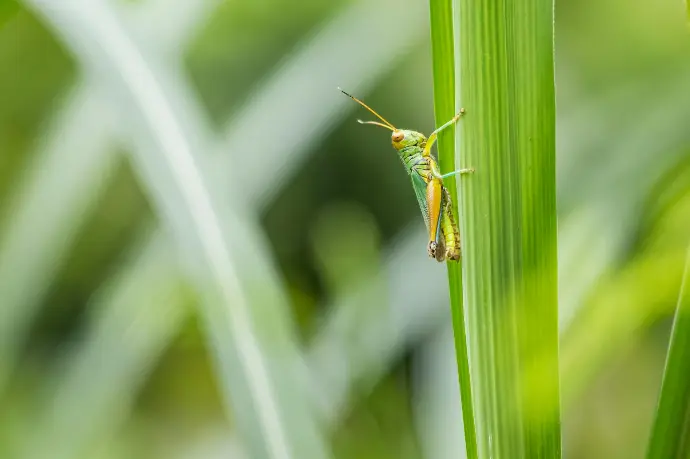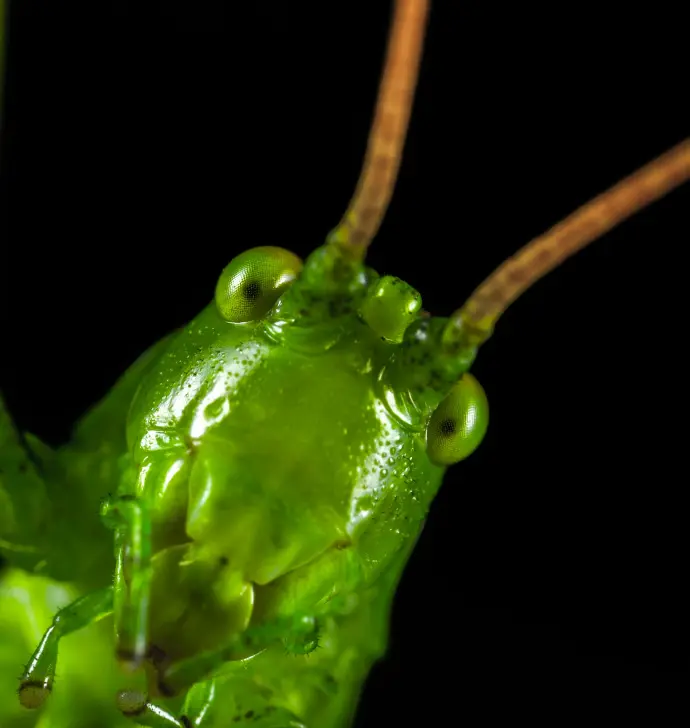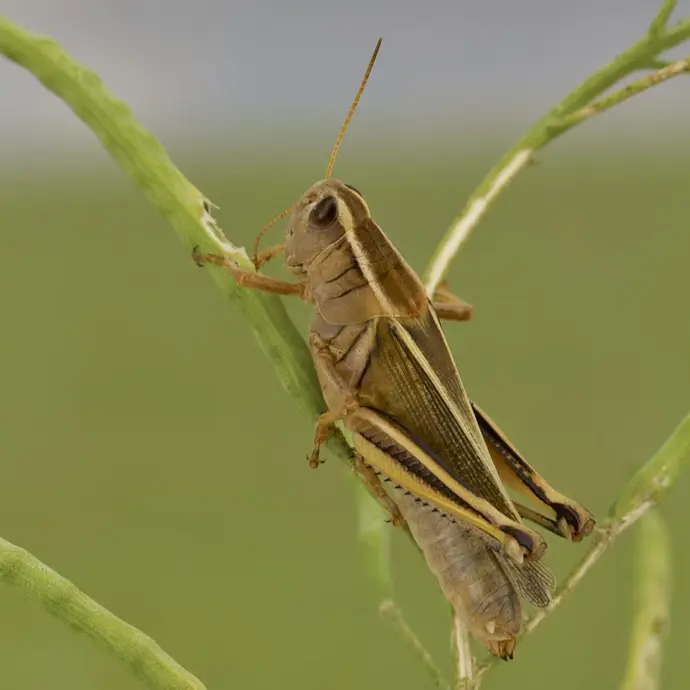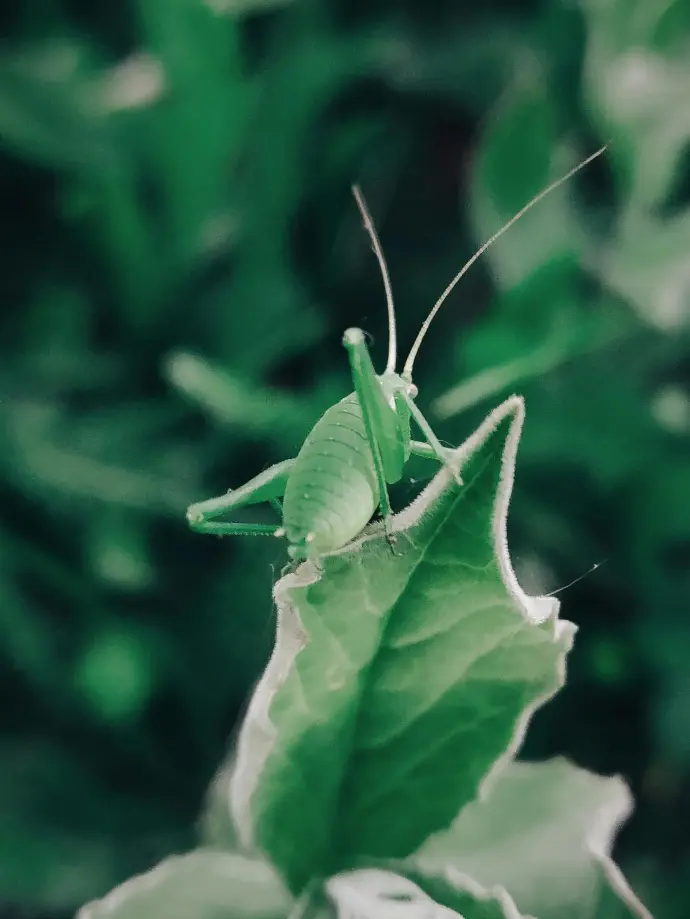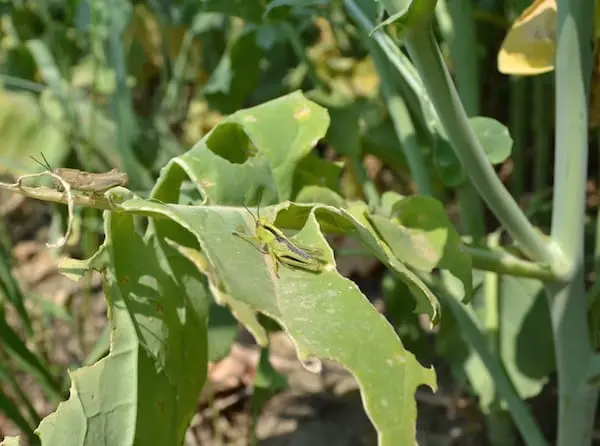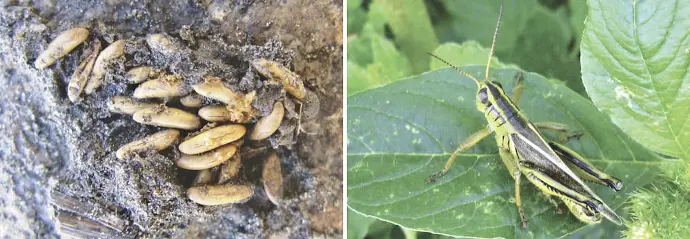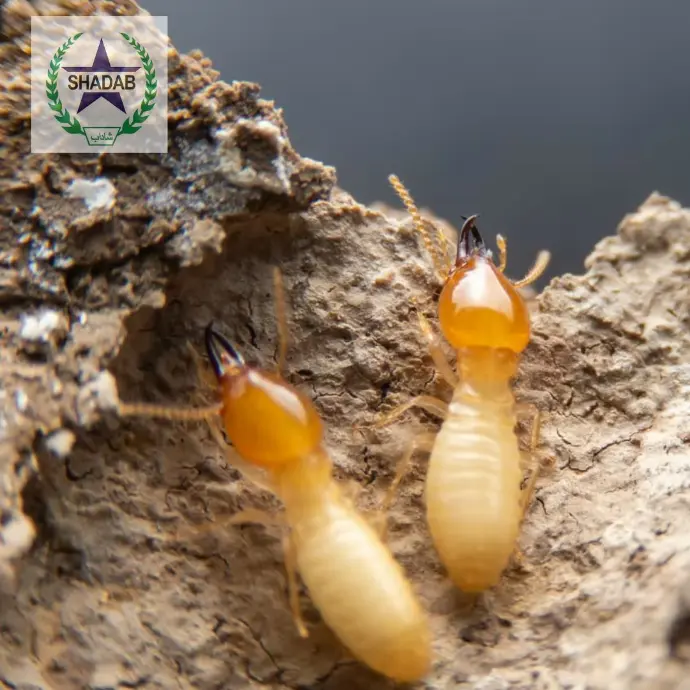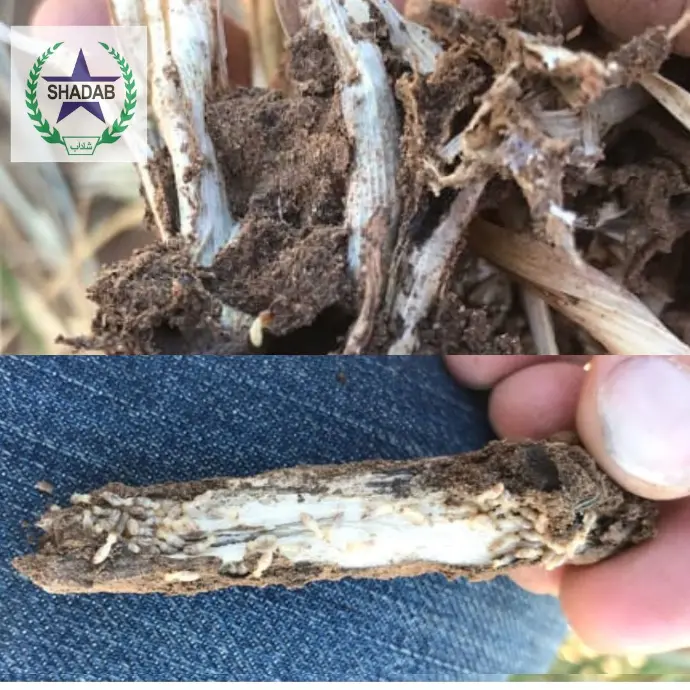Canola Insect Pests
After soybeans, canola (Brassica napus L.) is the second most significant source of vegetable oil. While the meal is frequently used in animal feed all over the world, its oil is widely used in cooking, salad dressings, and margarines. Pakistan is an agricultural nation, yet its production of edible oil is still essentially lacking. More than three-fourths of the nation's estimated need for vegetable oil is supplied by imports. One crop that might be able to meet the nation's needs for edible oil is canola. Pest insects are a significant factor limiting this crop's yield. Aphids are regarded as the main pest among insects. The Hemiptera: Aphididae family includes the three aphid species that are known to infest canola crops: Myzus persicae (Sulzer), the turnip aphid Lipaphis erysimi Kalt, the cabbage aphid Brevicoryne brassicae (L.), and the green peach aphid Myzus persicae (L.). When canola seedlings are heavily attacked by aphids, the cotyledons may wilt and the leaves may turn yellow. Aphid infestations at high densities on flowers and pods reduce yield. Aphids typically reduce brassica plant yield by 30 to 35 percent, but in unmanaged environments, yield losses can approach 70 percent. Pesticides are the only means of controlling the infestation. Pests have developed resistance and made a comeback as a result of the careless use of pesticides, posing risks to human health and the environment. Alternative bio-intensive control measures are desperately needed in this situation as the cornerstone of an IPM program.
کینولا کے کیڑے
سویابین کے بعد، کینولا (براسیکا نیپس ایل.) سبزیوں کے تیل کا دوسرا اہم ترین ذریعہ ہے۔ اگرچہ یہ کھانا پوری دنیا میں جانوروں کے کھانے میں کثرت سے استعمال ہوتا ہے، لیکن اس کا تیل بڑے پیمانے پر کھانا پکانے، سلاد ڈریسنگ اور مارجرین میں استعمال ہوتا ہے۔ پاکستان ایک زرعی ملک ہے، اس کے باوجود اس کی خوردنی تیل کی پیداوار میں بنیادی طور پر کمی ہے۔ ملک کی تخمینہ شدہ ضرورت کا تین چوتھائی سے زیادہ خوردنی تیل درآمدات سے فراہم کیا جاتا ہے۔ ایک فصل جو ملک کی خوردنی تیل کی ضروریات کو پورا کر سکتی ہے وہ کینولا ہے۔ کیڑے مکوڑے ایک اہم عنصر ہیں جو اس فصل کی پیداوار کو محدود کرتے ہیں۔ افڈس کو کیڑوں میں اہم کیڑوں کے طور پر شمار کیا جاتا ہے۔ Hemiptera: Aphididae خاندان میں افیڈ کی تین اقسام شامل ہیں جو کینولا فصلوں کو متاثر کرنے کے لیے مشہور ہیں: Myzus persicae (Sulzer)، شلجم افیڈ Lipaphis erysimi Kalt، بند گوبھی کی افیڈ Brevicoryne brassicae (L.)، اور سبز آڑو aphid Myzus persicae (L. .) جب کینولا کے بیجوں پر افڈس کا بہت زیادہ حملہ ہوتا ہے تو، cotyledons مرجھا سکتے ہیں اور پتے پیلے ہو سکتے ہیں۔ پھولوں اور پھلیوں پر زیادہ کثافت پر افیڈ کی افزائش پیداوار کو کم کرتی ہے۔ افڈز عام طور پر براسیکا کے پودے کی پیداوار کو 30 سے 35 فیصد تک کم کرتے ہیں، لیکن غیر منظم ماحول میں، پیداوار کے نقصانات 70 فیصد تک پہنچ سکتے ہیں۔ کیڑے مار ادویات ہی انفیکشن کو کنٹرول کرنے کا واحد ذریعہ ہیں۔ کیڑوں نے مزاحمت پیدا کی ہے اور کیڑے مار ادویات کے لاپرواہ استعمال کے نتیجے میں واپسی کی ہے، جس سے انسانی صحت اور ماحولیات کو خطرات لاحق ہیں۔ آئی پی ایم پروگرام کے سنگ بنیاد کے طور پر اس صورتحال میں متبادل بائیو انٹینسیو کنٹرول اقدامات کی اشد ضرورت ہے۔
Cabbage Butterfly
The Cabbage Butterfly, scientifically known as Pontia protodice, is commonly referred to as گوبھی کی تتلی. This species primarily inhabits canola crops and is characterized by its striking white wings adorned with several black markings, achieving a wingspan of approximately 45 mm. These butterflies are typically observed fluttering around fields from early spring through late fall, contributing to the vibrant ecosystem of agricultural landscapes.The larvae of the Cabbage Butterfly exhibit a velvety-green coloration, featuring a subtle yellow stripe along the dorsal side and a series of yellow spots on the lateral body. When fully grown, these larvae reach a length of about 30 mm. The eggs, which are oblong and initially white to cream in color, eventually develop a yellowish hue. They are laid upright on the undersides of leaves, with their shape often likened to that of a football. In terms of pest management, the presence of cabbageworms feeding on canola leaves serves as an important indicator for monitoring the health of the crop.
گوبھی کی تتلی، جسے سائنسی طور پر پونٹیا پروٹوڈیس کہا جاتا ہے، عام طور پر اسے پیروی کرنے کے لیے گوبھی کہا جاتا ہے۔ یہ پرجاتی بنیادی طور پر کینولا کی فصلوں میں رہتی ہے اور اس کی خاصیت اس کے سفید پروں پر ہے جو کئی سیاہ نشانات سے مزین ہیں، جس کے پروں کا پھیلاؤ تقریباً 45 ملی میٹر ہے۔ یہ تتلیاں عام طور پر موسم بہار کے اوائل سے لے کر موسم خزاں کے آخر تک کھیتوں میں پھڑپھڑاتی ہوئی دیکھی جاتی ہیں، جو زرعی مناظر کے متحرک ماحولیاتی نظام میں حصہ ڈالتی ہیں۔ پس منظر کے جسم پر پیلے دھبے۔ مکمل طور پر بڑھنے پر، یہ لاروا تقریباً 30 ملی میٹر کی لمبائی تک پہنچ جاتے ہیں۔ انڈے، جو لمبے ہوتے ہیں اور ابتدائی طور پر سفید سے کریم رنگ کے ہوتے ہیں، آخر کار زرد مائل ہو جاتے ہیں۔ وہ پتوں کے نیچے کی طرف سیدھے رکھے جاتے ہیں، ان کی شکل اکثر فٹ بال سے تشبیہ دی جاتی ہے۔ کیڑوں کے انتظام کے لحاظ سے، کینولا کے پتوں پر کھانا کھلانے والے گوبھی کے کیڑے کی موجودگی فصل کی صحت کی نگرانی کے لیے ایک اہم اشارے کے طور پر کام کرتی ہے۔

How can we overcome the attack of cabbage butterfly?
The attack of cabbage butterfly can be controlled by using following chemicals like bifenthrin Bifenthrin spray and Emadox Emadox spray ,and foragen coragen product FMC .
Mustard Grasshopper
Grasshoppers, scientifically known as Melanoplus bivittatus, are classified as medium to large insects, with adult specimens measuring between 1 to 7 centimeters in length, contingent upon the specific species. These insects share common characteristics with katydids and crickets, including chewing mouthparts and two pairs of wings—one being narrow and robust, while the other is broad and pliable. Additionally, grasshoppers possess long hind legs that facilitate their remarkable jumping ability. However, they can be distinguished from their relatives by their relatively short antennae, which do not extend significantly beyond their bodies.Both nymphs and adult grasshoppers pose a threat to canola crops, as they consume leaves, stems, and pods. The most detrimental impact occurs during their feeding on the pods, which can lead to substantial crop damage. This feeding behavior not only affects the overall health of the plants but can also result in decreased yields, making it crucial for farmers to monitor and manage grasshopper populations effectively to protect their canola harvests.The attack of Aphids can be controlled by the use of Lambda lambda cyhelothrin stedec cyhelothrin.
مسٹرڈ گراس ہاپر
ٹڈڈی، جو سائنسی طور پر میلانوپلس بیوٹیٹس کے نام سے جانا جاتا ہے، درمیانے سے بڑے حشرات کے طور پر درجہ بندی کی جاتی ہے، بالغ نمونوں کی لمبائی 1 سے 7 سینٹی میٹر کے درمیان ہوتی ہے، جو مخصوص پرجاتیوں پر منحصر ہوتے ہیں۔ یہ کیڑے کیٹیڈڈز اور کریکٹس کے ساتھ مشترکہ خصوصیات رکھتے ہیں، بشمول چبانے والے ماؤتھ پارٹس اور پروں کے دو جوڑے — ایک تنگ اور مضبوط، جبکہ دوسرا چوڑا اور لچکدار ہے۔ مزید برآں، ٹڈّی کی پچھلی ٹانگیں لمبی ہوتی ہیں جو اُن کی شاندار کودنے کی صلاحیت کو آسان بناتی ہیں۔ تاہم، ان کو ان کے رشتہ داروں سے ان کے نسبتاً مختصر اینٹینا کے ذریعے پہچانا جا سکتا ہے، جو کہ ان کے جسم سے زیادہ نہیں بڑھتے ہیں، دونوں اپسرا اور بالغ ٹڈڈی کینولا فصلوں کے لیے خطرہ ہیں، کیونکہ وہ پتوں، تنوں اور پھلیوں کو کھاتے ہیں۔ سب سے زیادہ نقصان دہ اثر پھلیوں پر ان کے کھانے کے دوران ہوتا ہے، جس سے فصل کو کافی نقصان پہنچ سکتا ہے۔ کھانا کھلانے کا یہ رویہ نہ صرف پودوں کی مجموعی صحت کو متاثر کرتا ہے بلکہ اس کے نتیجے میں پیداوار میں بھی کمی واقع ہو سکتی ہے، جس سے کاشتکاروں کے لیے ٹڈڈی کی آبادی کی نگرانی اور ان کا انتظام مؤثر طریقے سے کینولا کی فصلوں کی حفاظت کے لیے ضروری ہو جاتا ہے۔
Canola Termites
Termites, scientifically classified under the genus Odontotermes spp, are a highly successful group of insects that inhabit nearly all terrestrial environments, with the exception of Antarctica. Their colonies can vary significantly in size, ranging from a few hundred members to vast communities comprising millions of individuals. Notably, termite queens possess the longest lifespan among insects, with some individuals living between 30 to 50 years. Often referred to as "silent destroyers," these insects have a remarkable ability to consume wood, flooring, and even wallpaper without being detected.The damage caused by termites is particularly detrimental to agricultural crops, such as canola, as they create tunnels beneath the soil, affecting the plant's root system and leading to its eventual death. This underground mining behavior not only compromises the structural integrity of the plants but also poses a significant threat to crop yields, necessitating effective management strategies to mitigate their impact on agriculture.They can be controlled by the use of FMC Biflex.
کینولا دیمک
دیمک، سائنسی طور پر Odontotermes spp جینس کے تحت درجہ بندی کی گئی ہے، کیڑوں کا ایک انتہائی کامیاب گروہ ہے جو انٹارکٹیکا کے علاوہ، تقریباً تمام زمینی ماحول میں رہتے ہیں۔ ان کی کالونیاں سائز میں نمایاں طور پر مختلف ہو سکتی ہیں، جن میں چند سو ممبران سے لے کر لاکھوں افراد پر مشتمل وسیع کمیونٹیز شامل ہیں۔ خاص طور پر، دیمک کی ملکہ کیڑوں میں سب سے طویل عمر ہوتی ہے، کچھ افراد 30 سے 50 سال کے درمیان رہتے ہیں۔ جن کو اکثر "خاموش تباہ کن" کہا جاتا ہے، ان کیڑوں میں لکڑی، فرش اور یہاں تک کہ وال پیپر کو بغیر پتہ چلائے استعمال کرنے کی قابل ذکر صلاحیت ہوتی ہے۔ دیمک کی وجہ سے ہونے والا نقصان خاص طور پر زرعی فصلوں، جیسے کینولا کے لیے نقصان دہ ہے، کیونکہ وہ نیچے سرنگیں بناتے ہیں۔ مٹی، پودے کے جڑ کے نظام کو متاثر کرتی ہے اور اس کی موت کا باعث بنتی ہے۔ زیر زمین کان کنی کا یہ رویہ نہ صرف پودوں کی ساختی سالمیت سے سمجھوتہ کرتا ہے بلکہ فصل کی پیداوار کے لیے بھی ایک اہم خطرہ ہے، جس سے زراعت پر ان کے اثرات کو کم کرنے کے لیے موثر انتظامی حکمت عملیوں کی ضرورت ہے۔
Canola Aphids
Aphids, specifically identified as Macrosiphum euphorbiae, commonly referred to as سست تیلا, are known to inhabit sunflower crops. Various species of aphids, such as the cabbage aphid (Brevicoryne brassicae L.) and the turnip aphid (Lipaphis erysimi L.), can also be found in canola fields. Although the presence of these small, soft-bodied insects is not unusual, they typically do not inflict significant economic harm to canola crops. It is essential for farmers to accurately identify these pests during scouting activities, as this is crucial before assessing any economic thresholds. Aphids are classified as sucking pests, extracting cell sap from the delicate parts of plants, which leads to damage in leaves and tissues. Symptoms of this damage include leaves that fail to open properly and exhibit reduced size. In cases of severe infestation, the shoots may wilt and dry out. Additionally, winged aphids are capable of transmitting viruses, such as Potato virus Y and potato leaf roll virus, between plants. They also produce honeydew, which encourages the growth of black sooty mold, thereby obstructing photosynthesis and potentially resulting in substantial yield losses for farmers. The attack of Aphids can be controlled by the use of FMC Product and acetamiprid helpful in controlling these noxious insects. کینولا ایفڈز
ایفڈز، خاص طور پر Macrosiphum euphorbiae کے طور پر پہچانا جاتا ہے، جسے عام طور پر Sistila کہا جاتا ہے، سورج مکھی کی فصلوں میں رہنے کے لیے جانا جاتا ہے۔ کینولا کے کھیتوں میں افڈس کی مختلف انواع، جیسے گوبھی aphid (Brevicoryne brassicae L.) اور شلجم aphid (Lipaphis erysimi L.)، بھی پائے جا سکتے ہیں۔ اگرچہ ان چھوٹے، نرم جسم والے کیڑوں کی موجودگی غیر معمولی نہیں ہے، لیکن یہ عام طور پر کینولا کی فصلوں کو کوئی خاص معاشی نقصان نہیں پہنچاتے۔ کاشتکاروں کے لیے یہ ضروری ہے کہ وہ اسکاؤٹنگ سرگرمیوں کے دوران ان کیڑوں کی درست شناخت کریں، کیونکہ یہ کسی بھی معاشی حد کا اندازہ لگانے سے پہلے بہت ضروری ہے۔ افڈس کو چوسنے والے کیڑوں کے طور پر درجہ بندی کیا جاتا ہے، جو پودوں کے نازک حصوں سے خلیے کا رس نکالتے ہیں، جو پتوں اور بافتوں کو نقصان پہنچاتے ہیں۔ اس نقصان کی علامات میں وہ پتے شامل ہیں جو صحیح طریقے سے کھلنے میں ناکام رہتے ہیں اور سائز کم ہوتے ہیں۔ شدید انفیکشن کی صورت میں، ٹہنیاں مرجھا کر سوکھ سکتی ہیں۔ مزید برآں، پروں والے افڈس پودوں کے درمیان وائرس منتقل کرنے کی صلاحیت رکھتے ہیں، جیسے آلو وائرس Y اور آلو کے لیف رول وائرس۔ وہ شہد کا دیو بھی پیدا کرتے ہیں، جو سیاہ کاجل والے سانچے کی نشوونما کی حوصلہ افزائی کرتا ہے، اس طرح فوٹو سنتھیسز کو روکتا ہے اور ممکنہ طور پر کاشتکاروں کی پیداوار میں نمایاں نقصان کا باعث بنتا ہے۔
